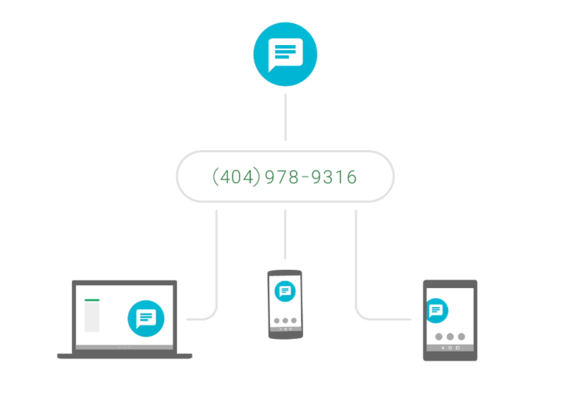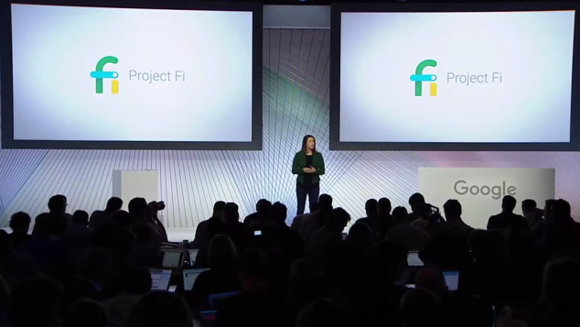It’s been about six months since went into the wireless business.
No, didn’t build a bunch of cell towers to take on Verizon or AT&T. Instead, oject Fi is an insurrection against many of the annoying facets of smartphone life. oject Fi offers a simple plan, whereby you only pay for data you use. Your phone automatically hops between T-Mobile, Sprint, open -Fi networks to try keep you constantly connected.
But ’s mobile service is an “experiment,” not open to just anyone. oject Fi only works with three of its own smartphones: the Nexus 6 5X, 6. And even though the service isn’t new, it still remains invite-only.
has offered some indications, however, that oject Fi might be more than a one-off experiment. tely we’ve heard some hints directly from as to what its future plans might entail.
y oject Fi?
oject Fi is what’s known as an MVNO (Mobile Virtual Network Operator)—a cell provider that leases access from the major carriers resells it. Think of Boost Mobile or MetroS. In the case of oject Fi, provides access through both T-Mobile Sprint’s networks. also engineered the Nexus 6, 6 5X to automatically hop to whichever service or open -Fi network is offering the best signal. The advantage being that none of the data used on -Fi counts towards your monthly plan. oject Fi also uses Voice, which means your phone calls text messages can be accessed on any device where you can sign in to your account.
 oject Fi
oject Fi oject Fi uses your Voice number to keep conversations messaging synced up across multiple devices.
The plans are pretty price friendly: it’s $20 per month for unlimited calls texts, with $10 for each GB of data. Anything you don’t use each month is applied as a credit toward next month’s bill at a rate of one cent per MB.
en it comes to the big “why” behind oject Fi, the company often touts its network capabilities unique pricing structure. But all that work sure seems to have a bigger goal in mind.
A spokesperson told us that the company wants to see more growth in 2016. The company wasn’t willing to detail what that might look like specifically in terms of subscriber growth.
“Over the past six months we’ve welcomed our first users, launched support for two new devices, used feedback data to make continuous improvements to our service. look forward to accelerating our growth in the months to come.”
To determine what form that acceleration could take, it’s worth looking at another business where has gone into new territory. enever has done this in the past, the goal has been to push an existing industry in a direction more favorable for its business. Chrome OS pushed the price of Internet-connected laptops down. Fiber is shoving the cable industry into the world of faster speeds. The latter is especially telling example.
The Fiber playbook
In 2012, Fiber began as an effort to push broadb Internet speeds to new heights by dumping old phone cable wires stringing fiber directly to residential homes. Not long after ’s gigabit Internet service caught on, suddenly AT&T, Comcast, others ramped up their Internet speeds lowered prices—but only in areas where competes. Fiber didn’t exactly take over (it’s still only running or scheduled to come to seven cities so far) but it’s shaping expectations for Internet service.
It’s sounds like a similar story to what’s going on with oject Fi. ile T-Mobile has pushed other companies to change their pricing structures, oject Fi could serve as a model for how to further simplify plans or engineer better coverage. will have certainly acquired a lot of knowledge about reception connectivity by doing oject Fi, which is something that may produce smarter radios for smartphones or other means for a more ubiquitous connection. And unlike Fiber, the whole country is effectively a competing market for oject Fi. The real hold-back is the limited device availability.
The most detailed public statement comes from Sabrina Ellis, a director of product management at . At the September press event debuting the Nexus 6 5X, she proclaimed that both phones would join the Nexus 6 on the network.

Both the Nexus 6 5X work with ’s oject Fi network.
“ launched oject Fi a few months ago to offer a fast, easy wireless experience to drive innovation with leading partners like Sprint T-Mobile,” she said. “ th today’s announcement, Fi users will have a larger set of phones to choose from.”
ong with praising Fi’s “high quality connection that intelligently selects between networks” she remarked that, “It’s still early days for oject Fi.”
ile that statement alone doesn’t guarantee a long-term commitment, there are other hints out there, especially when it comes to exping to other devices. The Moto X re ition, for example, unofficially works with oject Fi. The fact that an unlocked phone can talk to oject Fi on some level (only the T-Mobile towers, it appears) demonstrates that it’s entirely possible for future unlocked devices to work on Fi along with other carriers. Don’t be surprised if the Moto X or another phone makes it to oject Fi in the new year.
 YouTube
YouTube ’s Sabrina Ellis announced the Nexus 6 5X would work with oject Fi at the phones’ unveiling in September.
There’s also yet to be a tablet launch on oject Fi. Given that said “devices” with its future rollout we could see the Nexus 9 or a forthcoming Nexus tablet appear as oject Fi options. It would be a good way for someone who doesn’t want to ditch their phone plan to dabble with oject Fi see if they like how the service works. Again, wouldn’t confirm this, but it would be a smart move.
There’s always an escape plan
isn’t afraid to pull the plug when something doesn’t work. The latest example is Helpouts, a service the company shut down earlier this year. sought to build a unique platform where anyone could offer live video help over Hangouts.
The service didn’t have much traction, so away it went. Similarly, could just shut down oject Fi if it doesn’t work out or change the industry in any major way. You don’t sign a service contract can cancel your service with oject Fi at anytime, so could do the same.
Another sign to watch for is if brings in some type of family plan in 2016. That would be another sign of stability for the service, as it would indicate that subscribers are pressuring the Internet giant for more flexibility to add in family members.
The biggest impact to you ( the majority of those who don’t have oject Fi) is in what will use from its experiment to further improve its services. already knows your location, web browsing, search history. It could use the data available from oject Fi to further enhance services like Now or shopping offers. Or by having a host of data about wireless use habits, could very well be able to offer advertisers more specific information fine-tune its location know-how.
For now, oject Fi looks very much like an experiment. It’s one that’s certainly for the early adopter who is willing to go all in with their Voice number forego the traditional elements of a mobile plan like retail stores family packages. ’s relative reticence about detailing upcoming details tells us the company might have a lot up its sleeve in the next year. l that makes oject Fi a mystery worth paying attention to.














